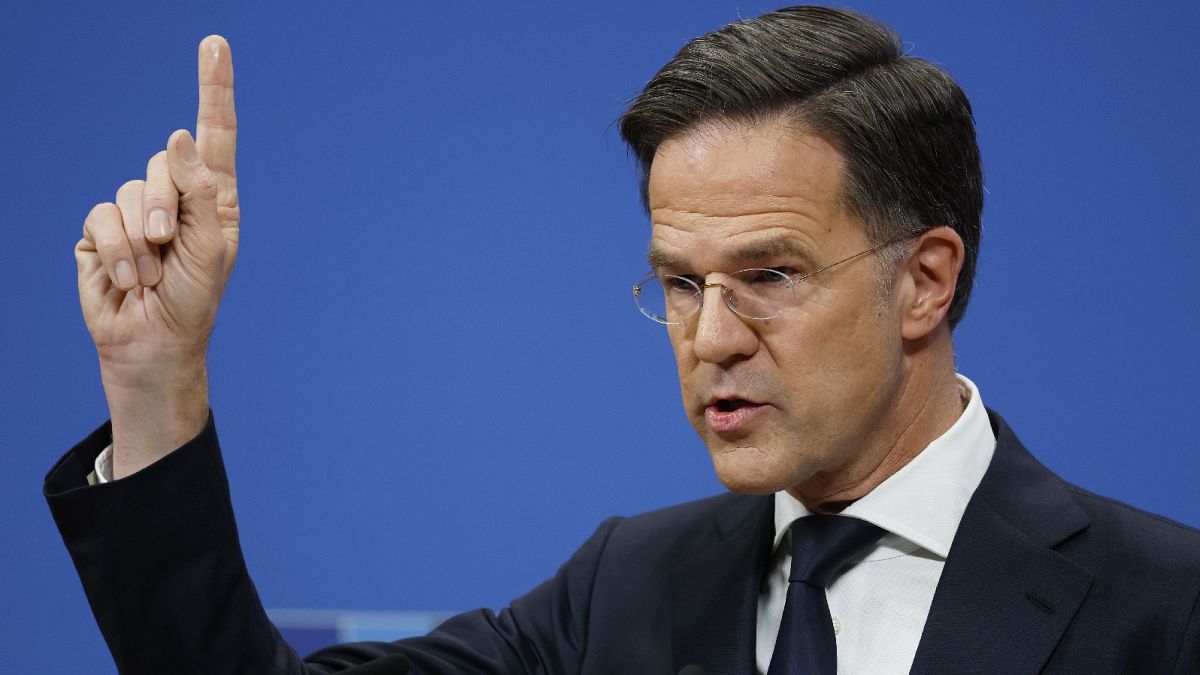Europe
NATO allies need to spend ‘considerably’ more to deter Russia: Rutte

NATO Allies Ramp Up Defense Spending Amid Rising Threats and New Targets
A New Era of Defense Spending: NATO Allies Increase Investments
NATO allies are in the midst of negotiating a significant increase to their defense spending targets, despite many member states still struggling to meet the current 2% of GDP threshold. In 2024, defense spending from Canada and European NATO allies saw a remarkable 20% year-over-year increase, reaching a total of $485 billion (€467.5 billion). This surge in investment reflects the growing urgency to bolster military capabilities and deter potential threats, particularly from Russia. NATO Secretary General Mark Rutte emphasized that while progress has been made, "considerably more money" is needed by the end of the decade to ensure collective security.
The 2024 spending figure marks a notable improvement, with two-thirds of NATO’s 32 member states now meeting or exceeding the 2% GDP benchmark. Rutte expressed optimism that even more allies will reach or surpass this target in 2025. However, the current spending levels are still deemed insufficient to address the escalating security challenges facing the alliance. As tensions with Russia remain high, and with Ukraine continuing to rely on Western support, the need for increased defense spending has become a central focus for NATO leaders.
The Push for a Higher Spending Target: Ambitions and Challenges
Defense ministers from NATO member states are set to convene in Brussels, where discussions on raising the defense spending target will take center stage. The current 2% GDP target, established in 2014, is increasingly seen as inadequate in light of modern threats and the rapid advancement of military capabilities. U.S. President Donald Trump has called for the target to be raised to 5%, a level no NATO ally currently meets. Meanwhile, the United Kingdom has signaled its intention to aim for a 3% target, and Rutte has suggested that 4% might be necessary.
Rutte warned that sticking to the 2% target would leave NATO ill-prepared to defend itself within five years, citing "simply too big" capability gaps. He underscored that the new target will "end up considerably north of 3%," signaling a significant shift in the alliance’s spending ambitions. While the exact figure has yet to be finalized, the push for higher defense spending reflects a growing consensus among NATO leaders that the current levels are unsustainable in the face of rising threats.
The Russian Threat and the Need for Deterrence
The urgency to increase defense spending is further highlighted by the evolving threat posed by Russia. A recent Danish intelligence report suggested that Moscow could potentially launch a full-scale war against European NATO allies by the end of the decade, particularly if U.S. support for the alliance were to waver. Rutte responded to these concerns with a stark warning: "If Russia were to attack, the reaction would be devastating… Putin will lose. So let him not try it."
Despite his confidence in NATO’s deterrence capabilities, Rutte acknowledged that Russia is currently "outspending and outproducing" European allies in terms of military production and investments. This disparity raises concerns about the alliance’s readiness to counter Russian aggression by 2030. Rutte stressed the importance of maintaining support for Ukraine, increasing defense spending, and ramping up military production, urging member states to make these decisions promptly.
Europe’s Financial Strategy to Boost Defense Spending
As NATO allies seek to bolster their defense capabilities, European Union leaders are grappling with how to finance these efforts. Estimates suggest that the financial gap to address the bloc’s security needs over the next decade could reach €500 billion. To bridge this gap, several options are being considered.
One proposal is to modify the EU’s fiscal rules to exclude defense spending from national expenditure calculations, thereby freeing up funds for military investments without breaching deficit limits. Another idea is the issuance of Eurobonds, or common debt, to finance joint defense projects. However, this measure faces opposition from EU member states with stronger financial positions, who are reluctant to take on additional liabilities.
A White Paper on defense is set to be released on March 19, outlining the military capabilities the EU needs and exploring various financing options. Final decisions on these proposals are expected to be made during the EU leaders’ summit in June, just a day after the NATO summit.
Upcoming Summits and the Road Ahead
The upcoming NATO and EU summits in June will be pivotal moments for the alliance and the bloc as they seek to address their security challenges. For NATO, the summit will provide a platform for leaders to finalize new defense spending targets and outline updated military capability goals. The discussions will also focus on ensuring continued support for Ukraine and strengthening deterrence against Russia.
Meanwhile, the EU summit will delve into the financial and strategic aspects of boosting defense spending and production. With the White Paper set to provide a roadmap for the bloc’s military ambitions, leaders will need to reconcile their differences and agree on concrete measures to address the funding gap.
As the geopolitical landscape continues to evolve, the decisions made at these summits will shape the future of European and transatlantic security. The stakes are high, but the collective resolve of NATO and EU member states to invest in their defense capabilities offers a glimmer of hope for a more secure and stable future.


















